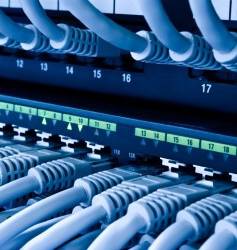A growing number of Russian businesses are beginning to study the problems associated with information flows. What is this phenomenon? What is the significance of information flows for the development of organizations? What are the features of the application of the methodology for their study for enterprises of different industries?
The practical importance of information flows
 Among the areas in which information flows are of the greatest practical importance are enterprise management.
Among the areas in which information flows are of the greatest practical importance are enterprise management.
In order to increase the efficiency of the production of goods, as well as their quality, to master the production of new types and introduce advanced technologies, company leaders employ a wide range of scientific and applied methods.
Information flows in the organization significantly contribute to the quality work of managers in all the areas noted.
By exploring them, companies can successfully solve the problems associated with the exploitation of existing production resources.
The use of information flows in production
Let's consider, by what mechanisms information flows at the enterprise are involved. As a rule, companies try to build them in system projections. The basis for the formation of which are information resources (having both internal and external origin).
Typical information model flows in the company, as we said above, reflects the interest of the company's management in improving the quality of management. Its construction involves the solution of the following main tasks:
- introduction of control systems on production lines;
- analysis of the quality of information sources, its collection, assessment of the significance and prospects of engaging in business;
- modeling the mechanisms of the direct influence of information on production processes;
- creating and updating a corporate knowledge base;

The specific algorithm for building the model depends, as a rule, on the industry specifics of the company. In some segments, the exchange of information both within the corporation and with the external market may be difficult due to secrecy or technological difficulties in compiling data into files and their subsequent transmission to the addressee.
Types of Information Streams
The generally accepted classification criteria, which would make it possible to unambiguously name the types of information flows, have not yet been developed in the modern Russian marketing school. Too many problematic aspects reflecting data exploration. However, among experts there is a fairly widespread model that divides flows into types depending on the nature of the information. So, they can be:
- financial;
- technological;
- marketing;
This, of course, is far from an exhaustive classification of information flows. Of course, the list goes on. Specific examples of information flows can be very different. It is important not to confuse them because of their harmony with industry phenomena. For example, financial and information flows implying cash and non-cash settlement channels reflecting information, statistical or analytical, about cash flows are not the same thing. However, the former can be quite qualitatively supplemented by the latter.
Engaging threads as a competitive tool
If a correctly functioning system of information flows is introduced in the company, this can become a significant competitive advantage of the company. In what aspects?
First of all, in process control. When the responsible employees of the company are appropriately supplied with the necessary information, this allows them to more effectively optimize certain stages of production. The information obtained by specialists allows us to identify the technologies that are most significant from the point of view of business profitability, as well as introduce those that are likely to become such.

Another advantage provided by the analysis of information flows is improving the quality of management at the personnel level.
Possessing the necessary data, corporate management structures the personnel have in their hands a tool that allows organizing the work of internal corporate structures more efficiently.
Another competitive factor that a company can obtain using information flows in its work is the better distribution of financial and material resources.
Possessing the necessary information, managers will know in what volumes and where to direct cash flows and raw materials more intensively, and where less.
All three factors noted make the company stronger in potential confrontation with competitors. Information flows make it possible, first of all, to overtake market players due to better building communication between internal corporate structures. As a result, production is more efficient, profitability is higher, prices are more competitive, and therefore, growing attractiveness in the eyes of buyers or customers in their segment.
Information Management Practice
By what practical mechanisms do companies manage information flows? As a rule, the basis for data exchange and analysis is the interaction of employees responsible for work in relevant areas, through internal corporate documents, network and web resources, sometimes financial sources. In them, as a rule, in the most reliable form (in contrast to, for example, oral negotiations, correspondence between employees, etc.), the current (or planned) state of affairs in a particular organization structure is described.

There is a special category of persons involved in the management of the corporate information system - information generators. They own the authorship of the data types discussed above. The main nuance here is that in an enterprise (especially if it is a large company) in some cases it is problematic to identify specific employees who participated in the generation of certain information. The main reason is that a significant part of documents (especially financial ones) go through multi-stage approval and adjustment procedures at the level of various management levels.
The work of the "authors" of information flows can be either spontaneous (that is, documents are formed as a by-product of the main labor activity), or carried out in a regular manner - these can be specialists whose task is to generate as much data as possible related to the company’s activities.
Data extracted from internal corporate documents and other sources with signs of reliability is uploaded to the information system (we will agree that it already exists in the company). After that, the information is analyzed and a decision is made on how to use the documents. If they are prescriptive (for example, they are instructions), then managers may consider it necessary to make adjustments to them or, conversely, leave them unchanged. If these are, say, accounting papers, then the relevant conclusions on them can be transferred to the financial department for subsequent analysis and reporting.
In the end, it all comes down to ensuring that information flows are somehow involved. And those that are of no practical use were excluded from circulation. Applied significance is the main criterion for information in an enterprise.
Network technologies
A number of experts call the use of network technologies the main criterion for the quality of the functioning of a corporate information system. What is meant here?
The fact is that the movement of information flows, ideally, according to experts, should be based on the principle of multi-vector. That is, the less closed (as well as unidirectional) channels - the better. The more competent people involved in generating and sharing data, the more efficient the business. From a technological point of view, the network will be the most optimal channel for their interaction. In practice, it can be a corporate website. This is not necessarily public - access from Internet users can be fully or partially limited.

Network technologies, of course, are also useful in terms of building relationships between the company and external players, which, by the way, can also be information generators. External information flows, coming, for example, in the form of customer requests or commercial offers from other organizations, in many cases are data of practical significance.
For example, having received from customers a certain set of requests for the release of goods with characteristics that are not yet characteristic of the products, the company management may decide to launch these products in production. Since the buyer wants to see them on the counter, he has informed about his wishes through the information channel provided by the company. The ability to communicate with customers can also be considered a competitive advantage in the business.
Information Quality Criteria
Having considered how external and internal information flows are formed, we can study the criteria that determine the quality of the information received in the internal corporate circulation. To such experts include:
- relevance (timeliness);
- veracity (verifiability);
- relevance (reflection of real problems);
- utility (applied value);
- comprehensibility (unambiguous interpretation);
- completeness (no need to clarify the facts);
The process, which involves checking the information circulating inside the company, for the above criteria, some experts call controlling (from the English control). The task of the specialists responsible for this work is to minimize the presence of data that do not meet the criteria in the company's information system.
About Controlling
A number of experts put additional meaning into the term "controlling". In particular, there is an opinion that this is an activity related not only to the analysis of the quality of information, but also to its interpretation, identifying aspects that affect the applied significance of the information. In addition, there are specialists who reduce the meaning of the term "controlling" only to the activities of the financial and economic structures of the enterprise. That is, in their opinion, all the information that is in circulation within the company should, ultimately, be used to optimize profits and expenses. Any scheme of information flows in accordance with this concept should be analyzed for impact on the profitability of the business.
There are experts who are somewhat narrowing the functions of specialists in controlling. In their theory, this activity should be limited only to the collection of information from different generators and its distribution to the competent departments. In some cases, controllers can form the optimal, according to their assessment, structure of the information flow, the format of its presentation.Experts believe that it should be analyzed and interpreted by structures specializing in a particular area of the enterprise.
That is, relatively speaking, statistics reflecting paint consumption during the production of toys should be transmitted to specialists responsible for the corresponding production stage. Financial data - in accounting, etc. Controlling implies only a statistical function. The study of information flows is performed by the competent company structures.
The value of information flow management
Let us try to determine in which aspects the greatest value of managing information flows is expressed. At the same time, we agree that controlling occupies one of the central functions in this process (and not just in terms of data collection and its structuring).
The main characteristic of information flows is the concentration of management objectives. The totality of the data circulating within the corporation determines a qualitative increase in the level of knowledge of each of the departments, largely due to interaction with other company structures and mutual recognition of the relevance of the tasks facing the enterprise.
Working with information flows, as well as controlling (provided there is sufficient depth of its use) allows you to detect weaknesses in the business. Individual production links are being improved, the company's products are becoming better and more competitive.
Work with information flows involves the concentration of company resources (not only material, but also personnel), identifying the strongest sides in the business model, finding new sources of increasing competitiveness, introducing innovative production mechanisms that have not been tested in the company before.
The use of information flows in logistics
In what other areas are information streams actively used? In logistics, definitely. What could be the reason for this?
Businesses operating in the field of production and sales of goods are characterized not only by information, but also by a wide variety of material flows - the movement of products from the factory to consumers, with and without intermediaries, within the country and abroad. Actually, this function is the responsibility of logistics, which has developed into an independent industry. Its most important characteristic is that in it information and material flows can be studied simultaneously. How?

Experts believe that the effective management of material flows directly depends on the quality of information processing that is used in logistics systems.
Here a lot depends on the level of knowledge that managers and specialists possess who carry out the corresponding analysis.
The fact is that logistics is a relatively new area for Russia. And those criteria that are characteristic of information systems, say, of a banking or production type, are not completely compatible with this industry.
First of all, experts say, at the level of methods and principles. From a technological point of view, the logistic information flow can well be explored with traditional tools. But how to correctly use them in a methodological aspect, Russian logistics is just learning to understand, experts say.
At the same time, industry experts, as analysts say, are making some progress. This is mainly due to the intensive computerization of the logistics sector. Now most employees of Russian companies have access to PCs and network technologies; software relevant to research and analytical tasks is being actively developed. Logistics companies get more opportunities to be open within the framework of network technologies - both in terms of interaction with other market players, and in terms of exchanging data with customers.








